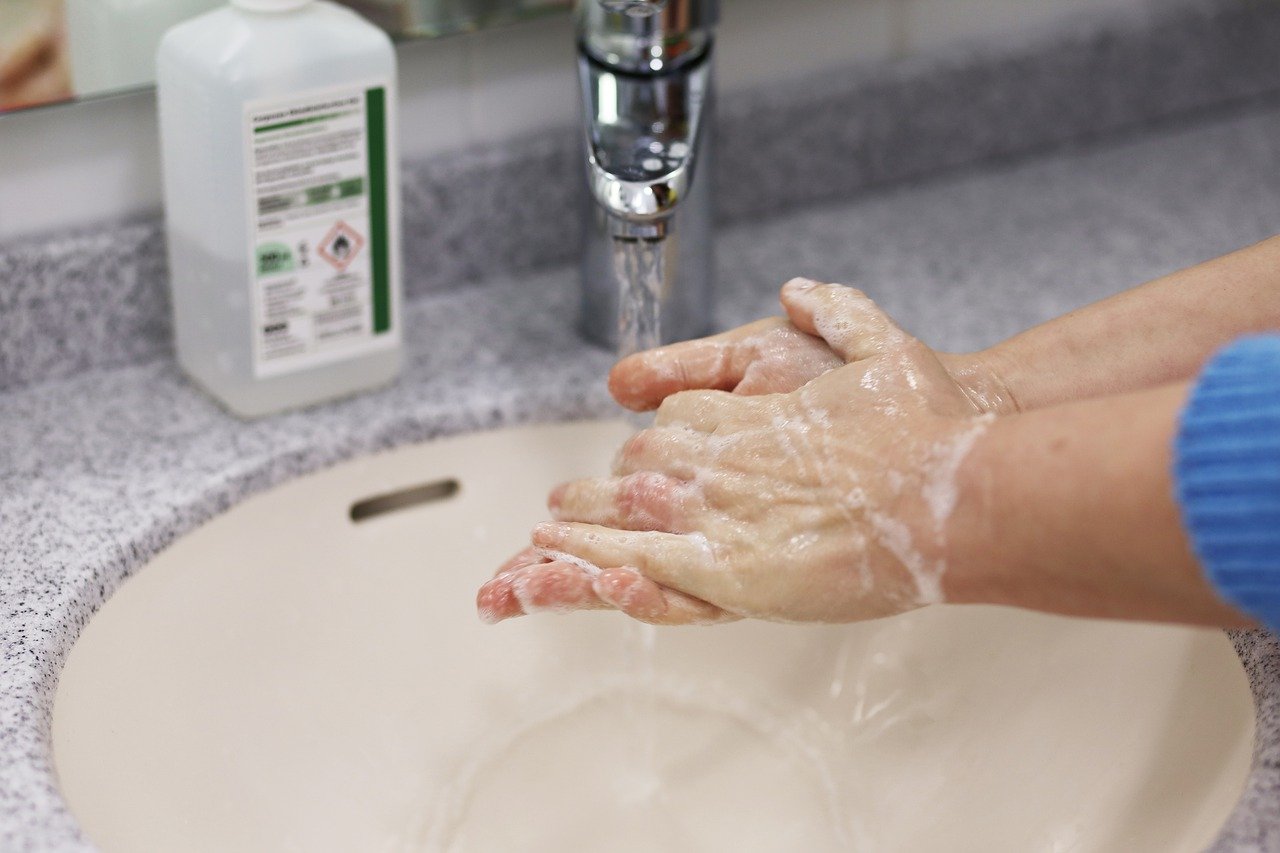We’ve learned a lot about COVID-19, the spread of a virus, and the mitigation of the spread over the past several months. The recommendation of the first line of defense - masking and social distancing – hasn’t changed since this pandemic started in January 2020, but it seems like every other recommendation has evolved throughout these long months. In our business of HVAC, we have kept up with the industry and CDC recommendations on ventilation and filtration and have been active in assessing commercial and institutional buildings.
This blog is specifically about where we are with the recommendations for ventilation (fresh air). Look for subsequent blogs from Cx Associates on ventilation airflow calculation methodology; ventilation control strategies; filtration and humidification recommendations; and lessons learned in the field.
Transmission Confirmed
Early in the pandemic, a Chinese analysis was conducted to determine how the virus can spread, thereby enabling effective recommendations to its mitigation. The following graphic shows a study of an air conditioning unit that was responsible for the transmission in January/February 2020.
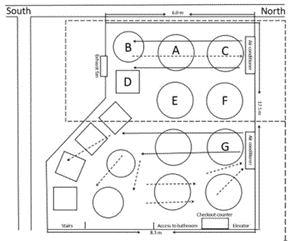
 Figure 1. COVID-19 Outbreak Associated with Air Conditioning in Restaurant, Guangzhou, China, 2020
Figure 1. COVID-19 Outbreak Associated with Air Conditioning in Restaurant, Guangzhou, China, 2020
Although this restaurant had an exhaust fan, it was turned off and there was no designated mechanical ventilation. The (2) air conditioning units were split-systems that only recirculated the room’s air. The unit that served tables ‘A’, ‘B’, and ‘C’ moved the same air back and forth across these three tables without any dilution. On January 24, 2020 Patron ‘A1’ was infected and a total of (20) people were exposed to this person’s breath. By February 5, 2020 (9) people also became infected. This proved to the world that fresh outside air and filtration are critical to mitigating the spread of the virus.
Air Handlers That Bring in Ventilation
There are three kinds of air handling unit (AHU) deigns that bring in outside air. The first is shown in Figure 2 below. This type of AHU brings return air back to the unit, mixes it with outside air, conditions it with heat/cool/humidity, and supplies the conditioned air back to the space. This type of configuration is very typical for units found in commercial buildings like offices and retail spaces.
 Figure 2. Schematic of Air-Handler with Recirculation
Figure 2. Schematic of Air-Handler with Recirculation
The second AHU design type is 100% outside air, which does not have the connection between the return air and outside air; 100% of the conditioned return air is exhausted and all the supply air is comprised of outside air conditioned by the AHU. This is very typical for hospitals or industries where the return air is compromised.
As you can imagine, the restaurant’s split-system described in Figure 1 uses a lot less energy than a 100% outside air unit because the unit does not need to bring all that outside air to a comfortable heating or cooling temperature. But, as we see from the Chinese study, bringing in no outside air is unhealthy.
To bring in sufficient outside air as efficiently as possible, the third design is a heat recovery ventilator (HRV) shown in Figure 3 below.
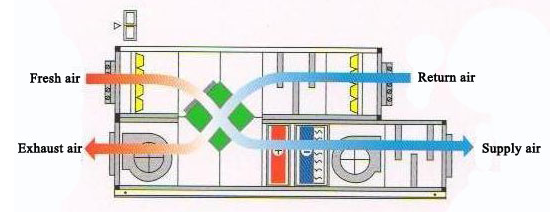 Figure 3. Heat Recovery Unit Providing 100% Ventilation Air
Figure 3. Heat Recovery Unit Providing 100% Ventilation Air
An HRV has a plate heat exchanger that uses the return building air to precondition the incoming ventilation air and there is no mixing of the exhaust and supply air streams. With efficiencies ranging between 68-84%, an average HRV can reduce heating energy consumption by 15-18%[1] over the 100% outside air unit described above. Unless there is air leakage within the unit, this type of unit will efficiently increase the ventilation air within a building without any chance of COVID transmission from the space. This design is has become standard over the past ten years and it is also often a good retrofit option for buildings that don’t have any ventilation air, such as buildings with localized heating/cooling units like baseboard heat, packaged terminal units, unit ventilators, or split-system heat pumps.
Alternate Air Handler Designs
It would be remiss if I didn’t also discuss two variations on the above-described air handler designs. Many recirculating units can add an economizer to the outside air (OA) intake.
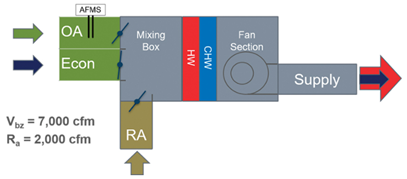 Figure 4. Recirculating Air Handler with Economizer
Figure 4. Recirculating Air Handler with Economizer
When the OA conditions are right for the heating or cooling mode and the unit can save energy by using straight outside air instead of mixing it with the return air, the economizer opens and the unit exhausts more building air. This greatly increases the amount of ventilation air. The limitation to this technology for COVID mitigation is that the heating and cooling coils are not designed for using an economizer when the outside air conditions are severely different from the desired supply air. A cooling coil, for example, could not sufficiently cool straight 95°F/80% RH outside air when it is designed to throttle the OA damper down to a minimum position under those conditions. For this reason, we are not recommending installing or using an economizer for COVID-19 transmission mitigation.
The last addition to an HRV design is the energy recovery ventilator (ERV).

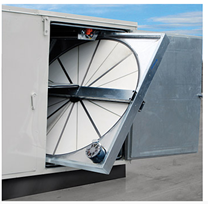
Figure 5. Energy Recovery Wheel
An ERV works on the same premise as an HRV, but instead of a plate heat exchanger, this unit uses a wheel with a webbed membrane similar to a filter membrane. This membrane transfers both sensible and latent energy from the exhaust building air to the incoming ventilation air. This makes such a unit highly efficient at recapturing the energy from the return air as it’s leaving the building, but the wheel can transfer contaminants from the exhaust air to the ventilation air entering the building. For this reason, ASHRAE first recommended turning off, or even removing, the energy wheel at the beginning of this pandemic. A problem for extreme climate zones is that the heating and cooling coils in these units were not designed for conditioning 100% outside air. If we remove a wheel in Vermont for example, we will have very cold supply air entering the spaces and we stand a very good chance of freezing and bursting the heating coil. In the summer of 2020, ASHRAE removed the recommendation with the realization that any contamination would be so strongly diluted by the time it got back into the building spaces that there was very little chance of virus transmission. The drawbacks outweighed the benefits.
Indoor Air Quality Recommendations
We have been in many buildings for an indoor air quality (IAQ) assessment and are making the following recommendations for bringing in sufficient outside air:
- Check all outside air damper actuators are functioning – if the damper is broken shut, you may think you are getting outside air, but you are not. If the damper is broken open, you are wasting energy by bringing in too much outside air.
- Check outside airflow entering your AHU and each space as compared to the ASHRAE Standard 62.1 requirement for the space size, type, and quantity of occupants. Modify the AHU and/or the terminal units (VAV boxes, unit ventilators, or fancoil units) to the required airflow rates (watch for Cx Associates’ future blog on this methodology).
- If there is no ventilation at all, or no possibility of increasing the AHU outside air supply, consider installing an HRV or an ERV. This could be a ducted, whole-building unit or a very small wall unit for a single space if you are a tenant that cannot influence the building’s air handling unit.
[1] MINNESOTA SUSTAINABLE HOUSING INITIATIVE, ENERGY RECOVERY VENTILATORS (HRVS & ERVS)


